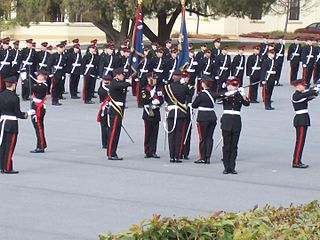
A military academy or service academy is an educational institution which prepares candidates for service in the officer corps. It normally provides education in a military environment, the exact definition depending on the country concerned.

The Royal Italian Air Force (RAI) was the air force of the Kingdom of Italy. It was established as a service independent of the Royal Italian Army from 1923 until 1946. In 1946, the monarchy was abolished and the Kingdom of Italy became the Italian Republic, whereupon the name of the air force changed to Aeronautica Militare.

The Italian Air Force is the air force of the Italian Republic. The Italian Air Force was founded as an independent service arm on 28 March 1923 by King Victor Emmanuel III as the Regia Aeronautica. After World War II, when Italy became a republic following a referendum, the Regia Aeronautica was given its current name. Since its formation, the service has held a prominent role in modern Italian military history. The acrobatic display team is the Frecce Tricolori.

Lieutenant General Count Pier Ruggero Piccio was an Italian aviator and the founding Chief of Staff of the Italian Air Force. With 24 victories during his career, he is one of the principal Italian air aces of World War I, behind only Count Francesco Baracca and Tenente Silvio Scaroni. Piccio rose to the rank of Lieutenant General and in later years, became a Roman senator under the Fascists before and during World War II.

Vincenzo Camporini, KGC, is an Italian general and politician. He was the Chief of the Defence General Staff in Italy from 12 February 2008 until 2011. He became chief of staff of the Italian Air Force on 20 September 2006. Camporini has over 2,500 hours' flying time in over twenty different aircraft types, including helicopters. General Camporini is qualified in Aeronautical Sciences and International and Diplomatic Sciences. He is a Fellow of the Royal Aeronautical Society.

The Fiat G.80 was a military jet trainer designed and produced by the Italian aircraft manufacturer Fiat. It has the distinction of being the first true jet-powered indigenous aircraft to be flown by Italy.
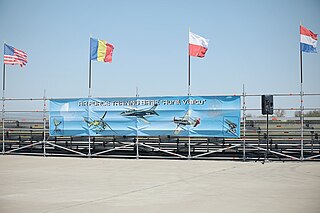
The Air Force Application School "Aurel Vlaicu", also known as Boboc Air Base, is the Romanian Air Force Application School based at Boboc, Buzău County. Originally located at the Boboc airfield starting from 1939, the school was re-established as the "Aurel Vlaicu" Aviation Officers School in 1953, and moved back to Boboc in 1958. Since August 2003, as a result of the air force transformation and re-sizing, the Air Force Application School is the main applicational facility for the three main air force branches: air force, surface-to-air missiles, and radiolocation.
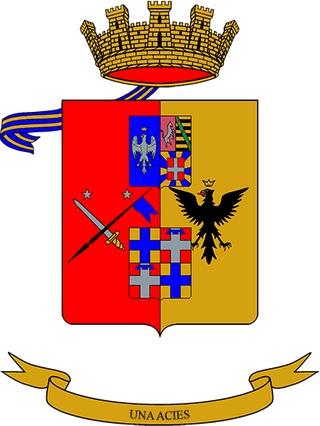
The Military Academy of Modena is a military university in Modena, northern Italy. Located in the Ducal Palace of Modena in the historic center of the city, it was the first such military institution to be created in the world.
An air force academy or air academy is a national institution that provides initial officer training, possibly including undergraduate level education, to air force officer cadets who are preparing to be commissioned officers in a national air force. The world's first air academy was the RAF (Cadet) College which was founded on 1 November 1919 on the site of a Royal Navy flying training station.

The Italian Naval Academy is a coeducational military university in Livorno, which is responsible for the technical training of military officers of the Italian Navy.

Rino Corso Fougier was a general of the Italian Royal Air Force. From 1940 to 1941 he served as the commander of the Corpo Aereo Italiano which, in concert with the Luftwaffe, took part in the Battle of Britain. From 1941 to 1943 he commanded the Regia Aeronautica. He was awarded the German Cross in Gold in January 1943.
Generale di Brigata AereaMarziale Cerutti began his military career in Field Artillery, but became a flying ace after his transfer to aviation service. He would be extensively decorated for valour, and credited with 17 confirmed aerial victories. He would also remain in Italy's aviation branch after World War I, becoming an officer of increasing importance. He rose through the ranks between the World Wars to become a Wing Commander with the rank of colonnello. During World War II, he served as chief of staff in Italy's North African Headquarters before being placed in command of Italy's air transport command. When Italy declared its armistice on 9 September 1943, Cerutti chose to continue service to Benito Mussolini. This resulted in his suspension from military duties at the end of World War II. He died in a motorcycle accident on 26 May 1946 while awaiting a final determination of his military status.
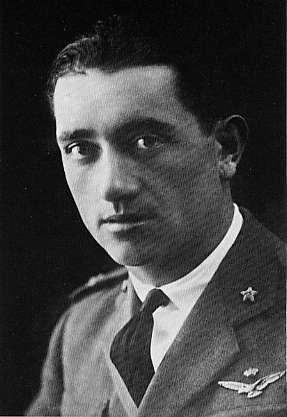
Tommaso Dal Molin was an Italian fighter pilot and internationally prominent seaplane air racer and aerobatic pilot of the 1920s.

Aldo Pellegrini was an Italian Air Force general during World War II.

Gennaro Tedeschini Lalli was an Italian Air Force general during World War II. He was in command of the Air Force in Italian East Africa from 1937 to 1939, in Sicily in 1940, and in Northern Italy from 1941 to 1943.
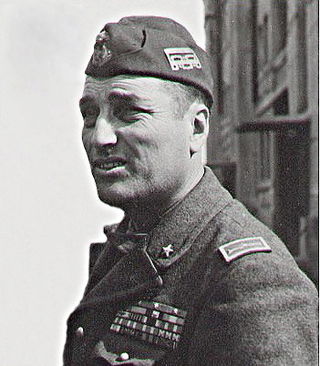
Enrico Pezzi was an Italian Air Force general during World War II. The youngest general in the Regia Aeronautica, he is best known for leading the Italian Air Force in Russia, where he was killed during a rescue mission in late 1942, being posthumously awarded the Gold Medal of Military Valor. He was the brother of Mario Pezzi, also a general in the Regia Aeronautica.
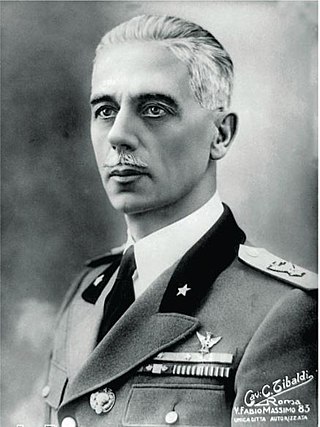
Riccardo Moizo was an Italian aviation pioneer in the early part of the 20th century and a general during World War II. He was Commander-General of the Carabinieri from 1935 to 1940 and the last High Commissioner of the Province of Ljubljana in 1943; from 1939 to 1943 he was also a member of the Italian Senate.

Fernando Silvestri was an Italian Air Force general during World War II.

Eraldo Ilari was an Italian Air Force general during World War II. He was commander of the 4th Air Fleet in Apulia and later of the 3rd Air Fleet in central Italy.


















